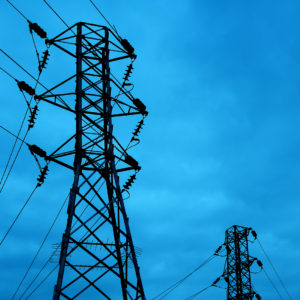There’s growing alarm that the top-down push for America to transition to renewable energy is surgically dismantling our existing electrical grid, along with its capacity to provide reliable power when needed.
Blackouts in California and Texas weren’t anomalies. As one energy regulator warned, they should have been a national wakeup call for a system in crisis. From one coast to the other, the nation’s supply of power is getting increasingly thin and less stable. The North American Electricity Reliability Corporation (NERC), which oversees the electric grid’s reliability, is sounding an ever-louder alarm that we’re stumbling into a completely avoidable but incredibly dangerous situation.
According to NERC’s winter reliability assessment, Texas, the Northeast, the Midwest, and Southeast are all at high risk of emergency operating conditions, with a chance for blackouts in New England during the coldest days of winter now registering as a shockingly high probability. One leading author of the NERC winter assessment told reporters, “The system hasn’t been stressed in this manner in the past and probably, more importantly, it hasn’t been as widespread.”
The obvious question is why is the nation’s supply of power on the ropes? While advocates of renewable energy like to point to anything but the intermittency of their resources, the hidden headline is that traditional sources of power – namely coal plants – are being forced off the grid with no real plan on how to reliably replace the fuel security and on-demand power they provide. Trying to replace coal generation with sources of power at the mercy of the weather has proven to be a fool’s errand.
High penetration of renewable power on electricity grids has become a defining challenge everywhere large amounts of solar and wind are being added. The boom-and-bust nature of wind power, for example, means billions of dollars in investments can carry a grid for hours or completely disappear when the wind stops blowing. At the end of November in the United Kingdom, for example, wind power went from generating 16 GW of power – equivalent to 15 large coal plants – to .4 GW in a day and a half. Planning for and accommodating that kind of volatility is precisely what is at the crux of our pending energy crisis.
In Germany, these wild swings and prolonged moments of debilitatingly uncooperative weather are called the “dunklefaluten” or dark doldrums. Renewable power there can swing from meeting 75 percent of the nation’s power to just 15 percent nearly overnight.
Renewable energy generation is only as reliable as the backup generation that must pick up the slack when it is inevitably unavailable. But to a disquieting extent, this backup source of secure power is being dismantled in nearly equal measure to renewables being added to the nation’s power plants.
Consumers are stuck paying increasingly more for a progressively less reliable system. Energy-driven inflation is placing an enormous and still-growing burden on Americans who are, according to numerous surveys, making sacrifices on food and other necessities to keep the lights on or keep their homes warm.
One would hope our elected leaders would recognize, address, and fix this issue, but sadly just the opposite is true as the Biden administration has aligned itself with the green-energy zealots to unleash a self-titled “suite of regulations” to push the nation’s remaining coal capacity off the grid. That means erasing a resource that meets more than 20 percent of the nation’s power, is the leading source of electricity generation in 15 states and does the heavy lifting during periods of peak energy demand during bitter cold. The coal fleet is further an invaluable price shock absorber that has shielded consumers from soaring natural gas prices, a direct result of the global energy crisis and America’s newfound role as the world’s largest liquified natural gas exporter.
It’s extraordinarily unlikely that those perpetuating the war on American coal will ever find reason and reverse course, but if recent events in Europe are any indication there may be no choice. Germany, the world’s renewable energy champion, has scrambled to replace Russian energy this year and reopened or extended the life of 21 coal plants. On a recent windless day, coal met 40 percent of Germany’s power. Our coal fleet should likewise play a vital role in providing balanced and secure energy, now, and well into our future.





